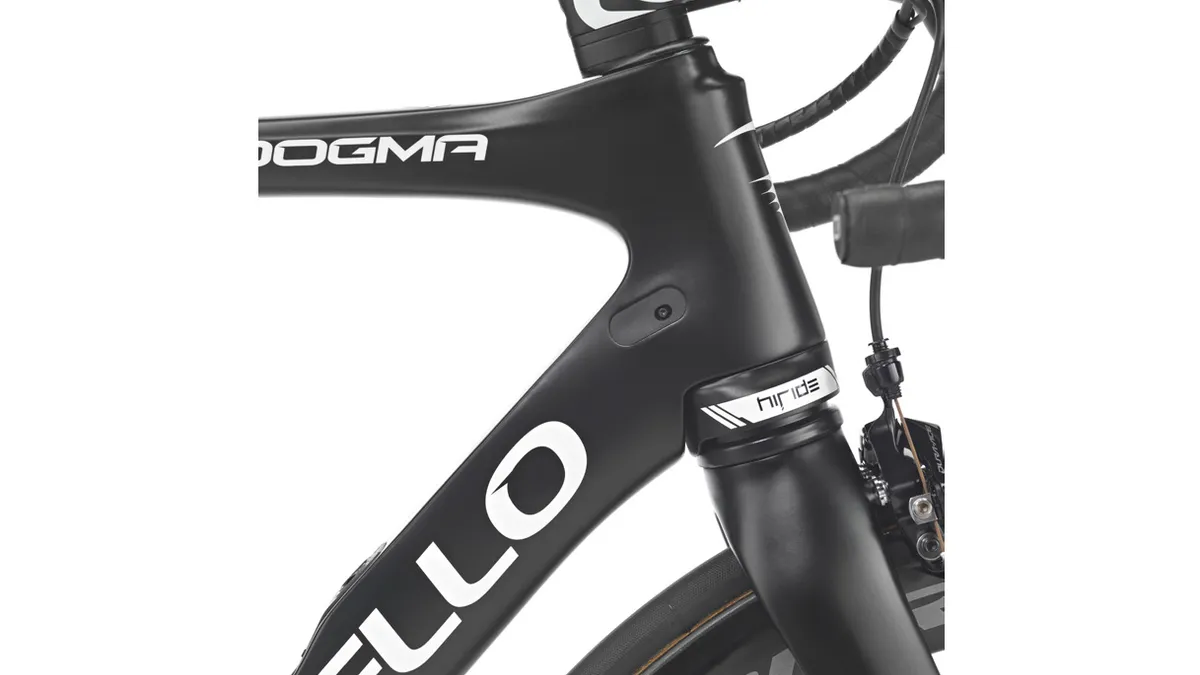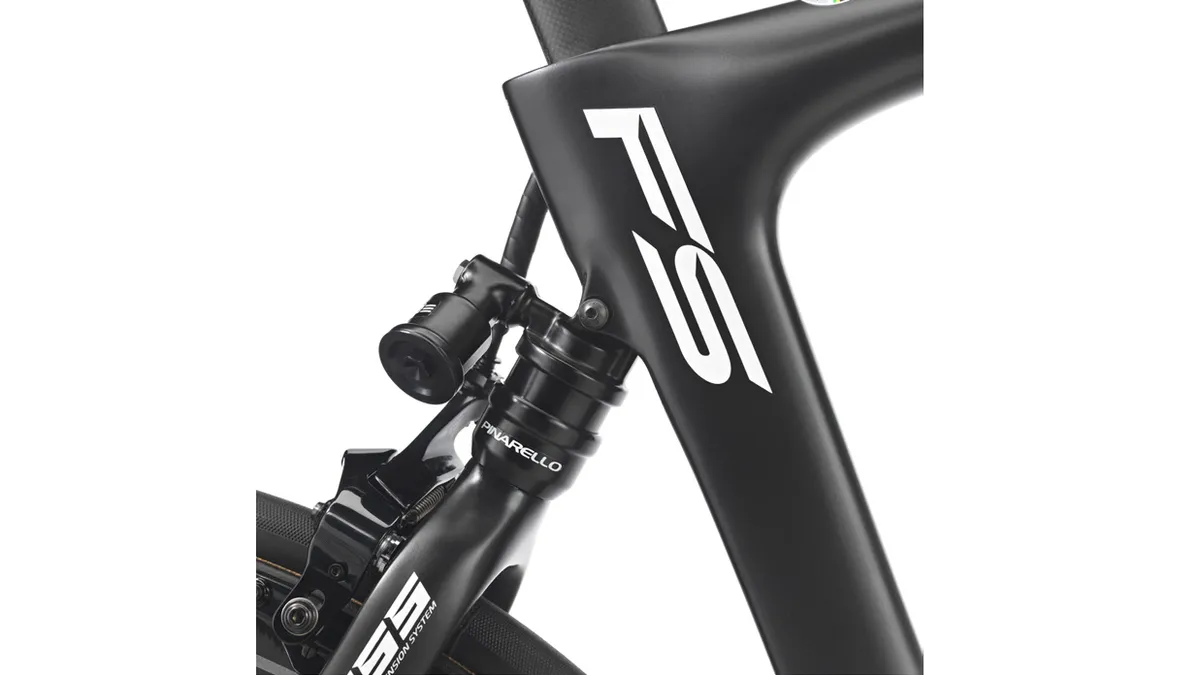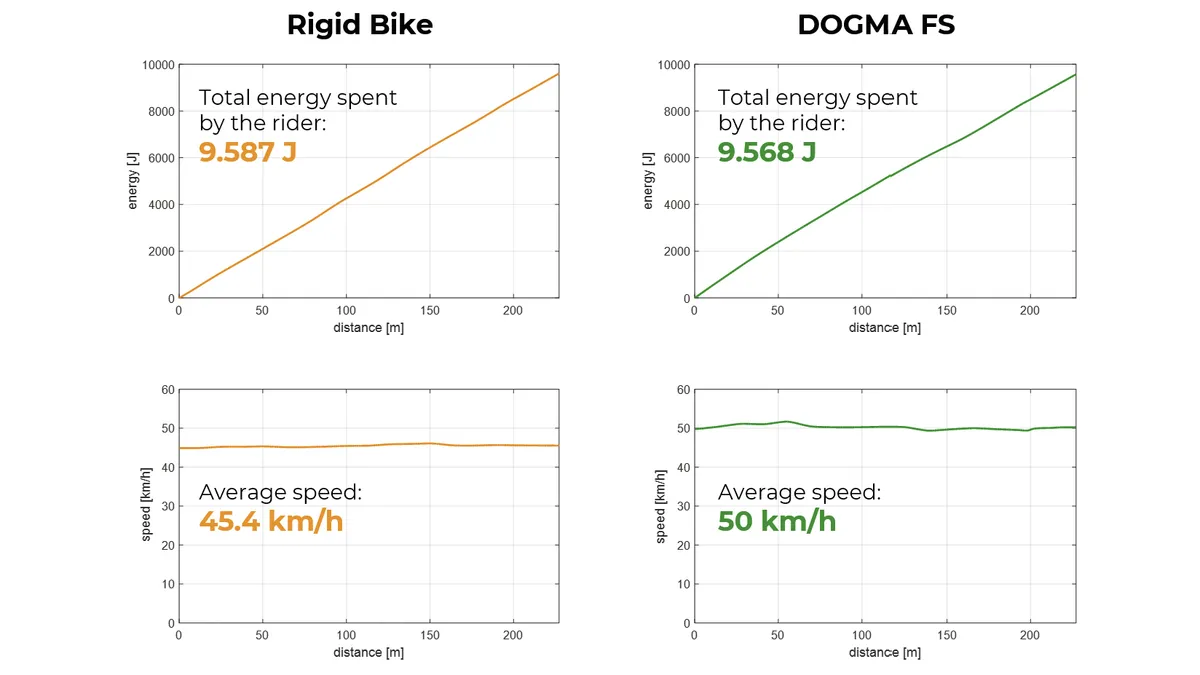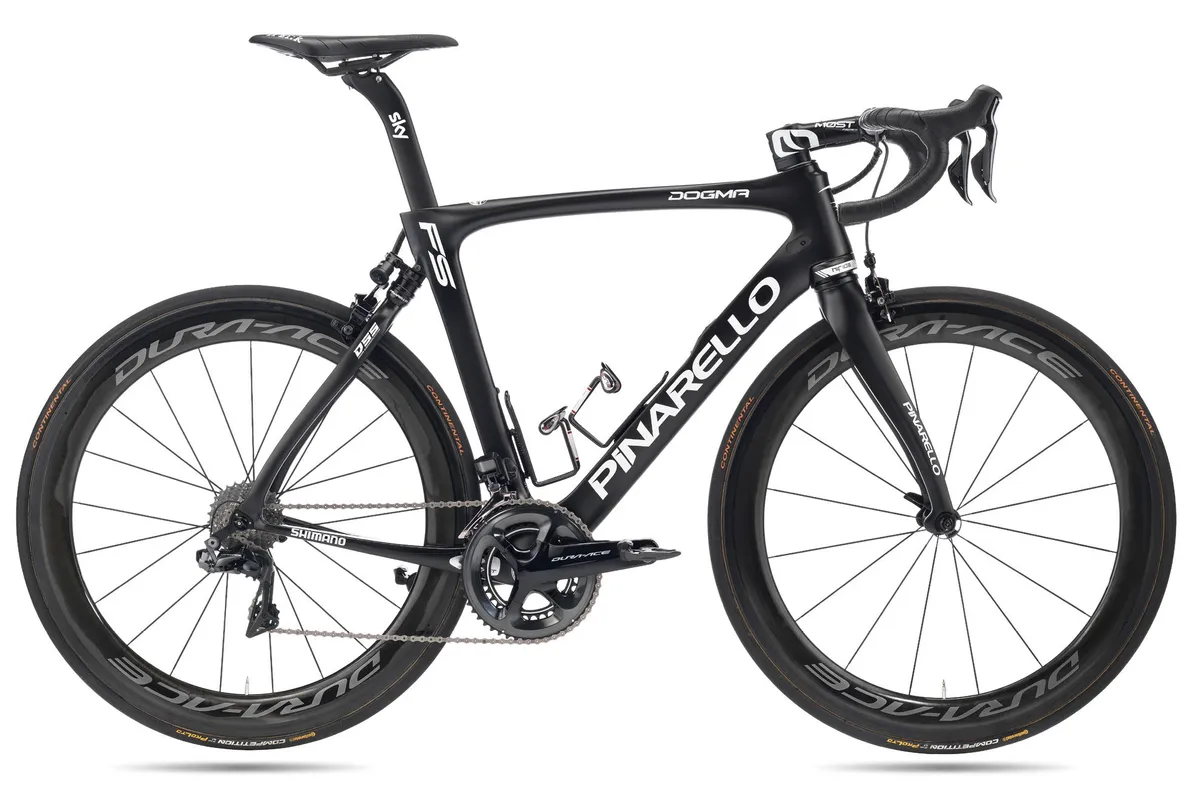Pinarello has just released a full suspension version of its Dogma race bike, based around HiRide’s fully-automated electronic suspension system. The bike has 20mm of travel at the fork and 11mm at the rear.
It will be ridden by select Team Sky riders at Paris-Roubaix — the most notoriously gnarly race of the classics — this weekend.
A version of the bike that had rear suspension only was previously available. Our Oli Woodman spent time on this bike last year and he was very impressed by the system.
- Riding HiRide’s semi-active suspension system for road bikes
- Best road bikes 2019: how to choose the right one for you
What is Pinarello’s DSAS suspension system and how does it work?
The previous version of the suspension-equipped Dogma, the K8-S, featured an elastomer-based rear suspension unit. The same unit is used on this bike but it’s complemented by a fork that has 20mm of damped travel.

Unlike the rear unit, the fork’s damper is based around a coil spring and a hydraulic damping circuit. This setup is not dissimilar to Cannondale’s HeadShok system, though this arrangement is far more discreet.
The headtube on the Dogma FS is slightly wider to accommodate the system. Likewise, the size of the upper bearing has been increased to 1 1/4in to maintain stiffness.
The length of the headtube has been reduced to keep the stack height suitably low for this race-focussed bike and the actual suspension unit itself is integrated into the lower portion of the headtube.
The head angle has been slightly slackened and the chainstays lengthened in a bid to improve handling in rough terrain. Lastly, the rake of the fork has also been slightly reduced to keep handling similar to the regular Dogma when the system is sagged.
No geometry chart was available at the time of writing to confirm these numbers.

The flexible stays in combination with the suspension unit are said to offer a total of 11mm of rear-wheel travel.

Unlike the front, the rear suspension unit is built around an elastomer. This is again paired with a hydraulic damping circuit.
As with the previous system, this damping circuit can be fully locked out on smooth terrain. This system can be left to run automatically, with a combination of gyroscopes and accelerometers able to determine when riders are on rough terrain, unlocking and locking as required. The system can also be fully manually overridden by the rider.

The DSAS system is powered by a battery pack located in the seat tube of the bike. The system can be controlled via a dedicated app, an ANT+ compatible Garmin head unit, or using the manual interface on the downtube.
Pinarello Dogma FS key specs
The Dogma FS features much of the same technology seen on the regular Dogma, including Pinarello’s signature aero ForkFlap, the aero-profiled recessed down tube and, for some unknown reason, an Italian-threaded bottom bracket.
Unusually for a bike that designed explicitly for riding on rough terrain, the Dogma FS is only rated for tyres up to 28mm wide. This is a bold move when clearances for tyres 30mm wide and upwards are not unusual on race bikes these days.
Only a rim brake version of the bike has been shown so far and it is not clear if a disc version will also be available. Pricing, specs and availability are also all to be confirmed.
Does suspension make road bikes faster? Pinarello thinks so.

The DSAS system is claimed to reduce the amount of road vibration that reaches the rider by 42 percent.
This reduction is claimed to result in a time that is 15 seconds faster than an unspecified ‘rigid’ road bike along the Carrefour De L’Arbre. The numbers in the graphs below shed some light on how these figures were achieved, though the exact methodology for the test is not defined.
Does the Pinarello Dogma FS suspension system actually work?
Potentially curious marketing stats aside, we’ve previously used the DSAS system on a Dogma K8-S and we were very impressed by its overall performance. You can read more on our impressions of it in our first ride review.
Will we see this system on other bikes?
It’s worth clarifying that Pinarello appears to have dropped the HiRide name — a separate company that had been developing the system for some years — from the DSAS system. Whether it is licensing the technology for use under its own name or has acquired HiRide is not clear.
Assuming it’s the former, it’s possible we could see the technology used on other brands’ bikes. We have contacted HiRide to clarify the situation.
Looking at the market more broadly, the release of this bike comes hot on the heels of the release of the second generation of the Futureshock-equipped Specialized Roubaix.
The Roubaix also uses suspension — though in a different configuration, with only the cockpit suspended — so it’s clear that larger manufacturers are taking heed of the potential advantages of suspension on road bikes.
Whether we will see even more mass-market adoption of suspension on road bikes remains to be seen, but we’ll be watching closely.
What do you think? Is suspension on road bikes marketing guff or the innovation we so desperately need? Let us know your thoughts below!

